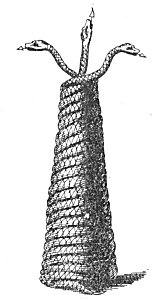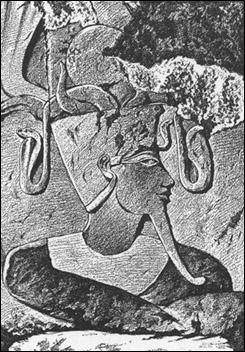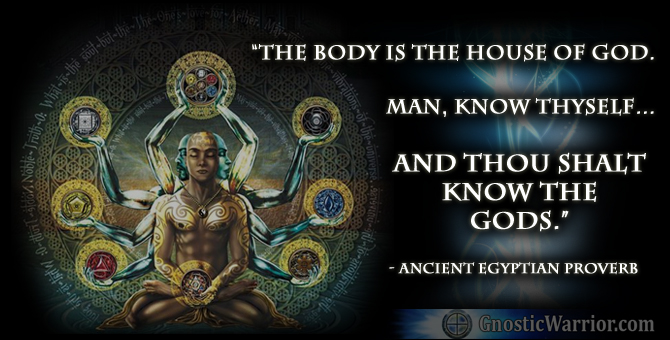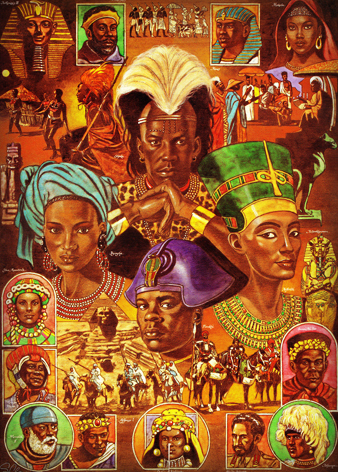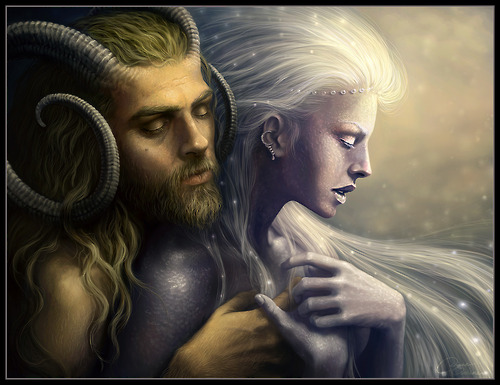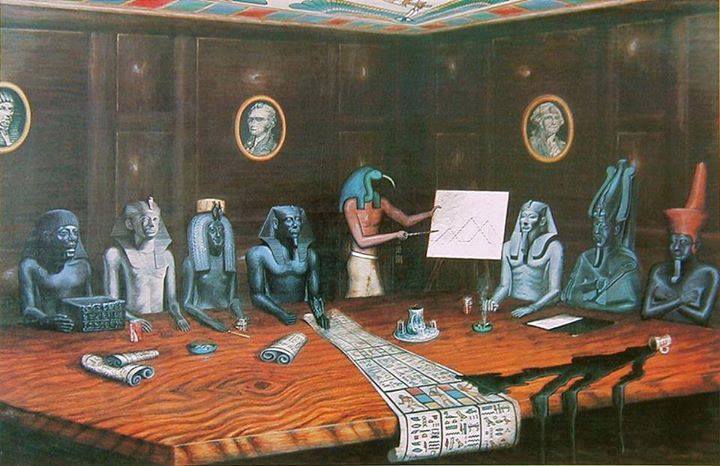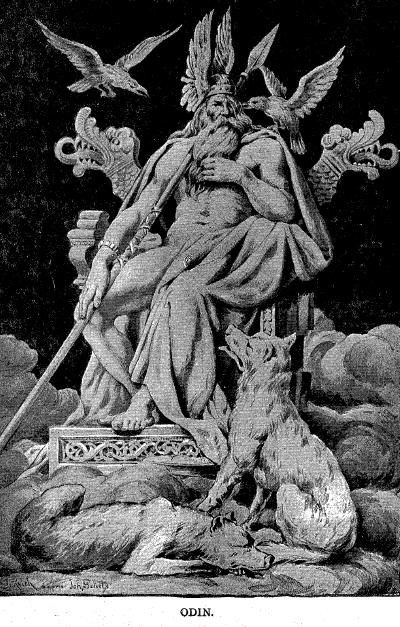Plato concludes his description by declaring that it was this great empire which attacked the Hellenic states. This did not occur, however, until their power and glory had lured the Atlantean kings from the pathway of wisdom and virtue. Filled with false ambition, the rulers of Atlantis determined to conquer the entire world. Zeus, perceiving the wickedness of the Atlanteans, gathered the gods into his holy habitation and addressed them. Here Plato’s narrative comes to an abrupt end, for the Critias was never finished. In the Timæus is a further description of Atlantis, supposedly given to Solon by an Egyptian priest and which concludes as follows:
“But afterwards there occurred violent earthquakes and floods; and in a single day and night of rain all your warlike men in a body sank into the earth, and the island of Atlantis in like manner disappeared, and was sunk beneath the sea. And that is the reason why the sea in those parts is impassable and impenetrable, because there is such a quantity of shallow mud in the way; and this was caused by the subsidence of the island.”
In the introduction to his translation of the Timæus, Thomas Taylor quotes from a History of Ethiopia written by Marcellus, which contains the following reference to Atlantis: “For they relate that in their time there were seven islands in the Atlantic sea, sacred to Proserpine; and besides these, three others of an immense magnitude; one of which was sacred to Pluto, another to Ammon, and another, which is the middle of these, and is of a thousand stadia, to Neptune.” Crantor, commenting upon Plato, asserted that the Egyptian priests declared the story of Atlantis to be written upon pillars which were still preserved circa 300 B.C. (See Beginnings or Glimpses of Vanished Civilizations.) Ignatius Donnelly, who gave the subject of Atlantis profound study, believed that horses were first domesticated by the Atlanteans, for which reason they have always been considered peculiarly sacred to Poseidon. (See Atlantis.)
From a careful consideration of Plato’s description of Atlantis it is evident that the story should not be regarded as wholly historical but rather as both allegorical and historical. Origen, Porphyry, Proclus, Iamblichus, and Syrianus realized that the story concealed a profound philosophical mystery, but they disagreed as to the actual interpretation. Plato’s Atlantis symbolizes the threefold nature of both the universe and the human body. The ten kings of Atlantis are the tetractys, or numbers, which are born as five pairs of opposites. (Consult Theon of Smyrna for the Pythagorean doctrine of opposites.) The numbers 1 to 10 rule every creature, and the numbers, in turn, are under the control of the Monad, or 1–the Eldest among them.
With the trident scepter of Poseidon these kings held sway over the inhabitants of the seven small and three great islands comprising Atlantis. Philosophically, the ten islands symbolize the triune powers of the Superior Deity and the seven regents who bow before His eternal throne. If Atlantis be considered as the archetypal sphere, then its immersion signifies the descent of rational, organized consciousness into the illusionary, impermanent realm of irrational, mortal ignorance. Both the sinking of Atlantis and the Biblical story of the “fall of man” signify spiritual involution–a prerequisite to conscious evolution.
Either the initiated Plato used the Atlantis allegory to achieve two widely different ends or else the accounts preserved by the Egyptian priests were tampered with to perpetuate the secret doctrine. This does not mean to imply that Atlantis is purely mythological, but it overcomes the most serious obstacle to acceptance of the Atlantis theory, namely, the fantastic accounts of its origin, size, appearance, and date of destruction–9600 B.C. In the midst of the central island of Atlantis was a lofty mountain which cast a shadow five thousand stadia in extent and whose summit touched the sphere of æther. This is the axle mountain of the world, sacred among many races and symbolic of the human head, which rises out of the four elements of the body. This sacred mountain, upon whose summit stood the temple of the gods, gave rise to the stories of Olympus, Meru, and Asgard. The City of the Golden Gates–the capital of Atlantis–is the one now preserved among numerous religions as the City of the Gods or the Holy City. Here is the archetype of the New Jerusalem, with its streets paved with gold and its twelve gates shining with precious stones.

Moe is the founder of GnosticWarrior.com. He is a father, husband, author, martial arts black belt, and an expert in Gnosticism, the occult, and esotericism.

